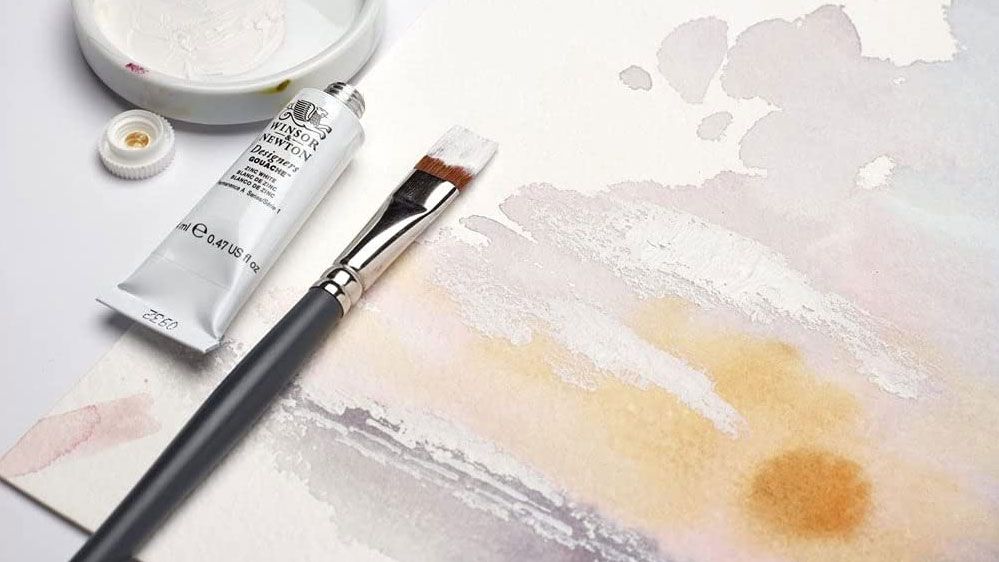The best gouache paints offer something quite unique to artists of all levels. This water-based medium is easy to clean from paintbrushes, simple to control and very forgiving, making it the perfect medium for colour work. And unlike watercolours, which are transparent, gouache paints are opaque. This allows you to create bold, flat washes of colour and build up layers for richer effects.
To help you find the best choice for you, our experts have hand-tested a huge range of products to assess their quality, value, colour range and applications. We’ve curated our list of the best gouache paints by prioritising high-quality pigments for vibrant, long-lasting colours. We’ve also included options that offer transparency and granulation for artistic versatility.
Once you’ve found the right paints for you, check out our selection of the best easels to complete your kit. And if you’d like to trying working in oils too, we’ve also got a similar guide to the best oil paints.
The best gouache paints available today
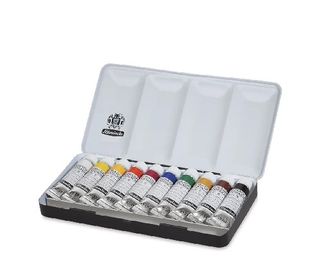 Best for pros
Best for pros
01. Schmincke Horadam Gouache
+ High quality
+ Reliable pigment
+ Works well with watercolour
– Expensive
These thick, high-quality paints are perfect for finished works, but have a limited colour range. The highly concentrated pigments offer intense, opaque results that cover well without adding white. They reactivate readily, and washes are closer to watercolour, even granulating slightly.
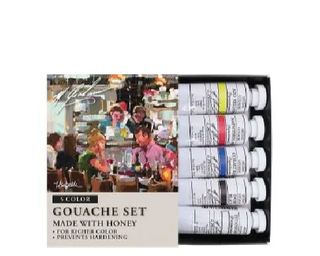 Best plein air
Best plein air
02. M. Graham Artists’ Gouache
+ High quality
+ Smooth application
+ Mixes easily
– Expensive
This high-quality gouache is well-suited for finished works, particularly plein air painting. It’s runny in consistency, though still intense in colour even when watered down. Different colours have similar consistencies and mix easily. Coverage is thinner, so it is less suited for flat areas, but it sits evenly without streakiness.
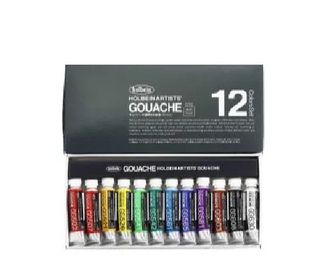 For designers
For designers
03. Holbein Artists’ Gouache
+ Large range
+ High quality
+ Thick and opaque
– Not all lightfast
This professional-quality paint comes in a wide range of opaque, intense colours (including metallic pigments) carefully designed for mixing. This, and its thick consistency that lays down well, are ideal for designers. It readily reactivates, but some colours aren’t lightfast, so take care with finished works and check the manufacturer’s guide.
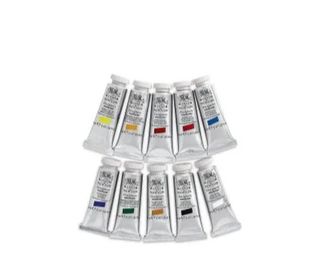 Best all-rounder
Best all-rounder
04. Winsor & Newton Designers Gouache
+ Non-toxic options
+ Colour range
– Can separate
– Variable thickness
This is the best gouache for general use. There’s a broad selection of high-pigment, opaque colours that mix predictably, making it suitable for both artists and designers. It has some excellent non-toxic substitutes, too. The paint covers well, but does sometimes separate and has variable consistency.
 Best portability
Best portability
05. Caran D’Ache Gouache Studio Box Set
+ Convenient pan
+ Sturdy
+ Well-laid-out
– Milder darks
– Watercolour-esque
This set is unusual in its portable, sturdy pan form, including a tube of white gouache to thicken and add opacity. Behaving more like watercolour with some more transparent darker colours, these paints are bright and layer well. These are best for sketchbook work, or colour sketches on the move.
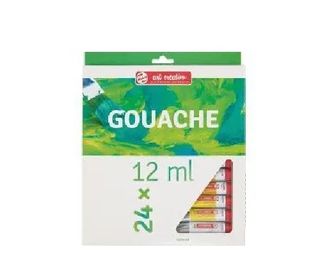 Best student
Best student
06. Royal Talens Art Creation Gouache
+ Good value
+ Reliable behaviour
– Very runny
– Sold as a set
This student-quality range is affordably priced, but with a fairly limited 24-colour range that only comes in sets. However, the paints mostly contain good-quality pigments, and handle surprisingly well for their price, producing even, flat areas of colour. It reactivates readily and layers well, but is runny, offering thinner coverage.
FAQs
What is gouache paint made of?
Gouache shares similarities with watercolour paints but there are a few key differences. Both use finely-ground pigments, but gouache pigments are slightly larger, allowing for more opacity and richer colours in paintings. While watercolour relies on gum arabic for binding, gouache incorporates additional binders like dextrin or cellulose gum for its characteristic matte finish and opacity. That said, some gouache formulations still include a small amount of gum arabic to improve water solubility and reactivate dried paint.
Is gouache good for beginners?
Gouache is a good choice for beginners at painting to choose, because of its forgiving nature. Unlike acrylics, gouache allows for easier layering and corrections (you can reactivate dried paint with water, making it easier to fix mistakes). It also delivers rich and opaque colours, allowing novice to create impactful paintings without needing advanced layering techniques. Cleaning up after a gouache session is simple. However, be aware gouache dries relatively quickly, so beginners who work slowly may prefer watercolours for this reason.
What brushes should I use for gouache?
The type of brush you choose with gouache paints will depend on the effects you want to achieve. Soft round brushes are a good choice for washes, layering and general painting, while flat brushes are better for creating even washes and blocking in large areas of colour. As the name suggests, detail brushes are ideal for adding fine details, lines, and accents. More broadly, synthetic brushes are generally better for gouache than natural hair brushes because they hold their shape well and are easier to clean.
How to choose the best gouache paints
With so many brands and qualities on the market, how do you choose the best gouache paints for your needs? Ultimately, you’ll need to decide where the balance for you lies between quality and value. Broadly speaking, gouache paints come in student-grade and artist-grade varieties.
The former are a budget-friendly option, but they often contain more fillers and less pigment. This translates to less vibrant colours and a need for more layers to achieve opacity. Artist-grade paints, on the other hand, are packed with pigment, resulting in richer colours and better coverage. They’re also more lightfast, meaning your artwork will resist fading over time. However, as you’d expect, you’ll pay more for these paints.
If you’re new to gouache, a student-grade set is a good starting point. As your skills develop, you can graduate to artist-grade brands. Also think about how important portability is to you. If you’re likely to travel with your paints a lot, you should consider pan gouache, which comes in compact, easy-to-travel-with tins.
How we test gouache paints
When testing gouache paints, we begin by examining the consistency straight from the tube. We’ll then evaluate the paint’s versatility by experimenting with different techniques, including thin washes and layering, while also checking blendability and drying time. We also evaluate the paint’s performance in mixed media applications and its adherence to other materials. Throughout the process, we take detailed notes on each paint’s characteristics, comparing different brands and price points.
To compile this list, we’ve also gathered feedback from artists of varying experience levels to incorporate diverse perspectives. Our aim with this comprehensive testing process is to provide readers with reliable information for selecting paints that best suit their needs.
 Best for pros
Best for pros Best plein air
Best plein air For designers
For designers Best all-rounder
Best all-rounder Best portability
Best portability Best student
Best student